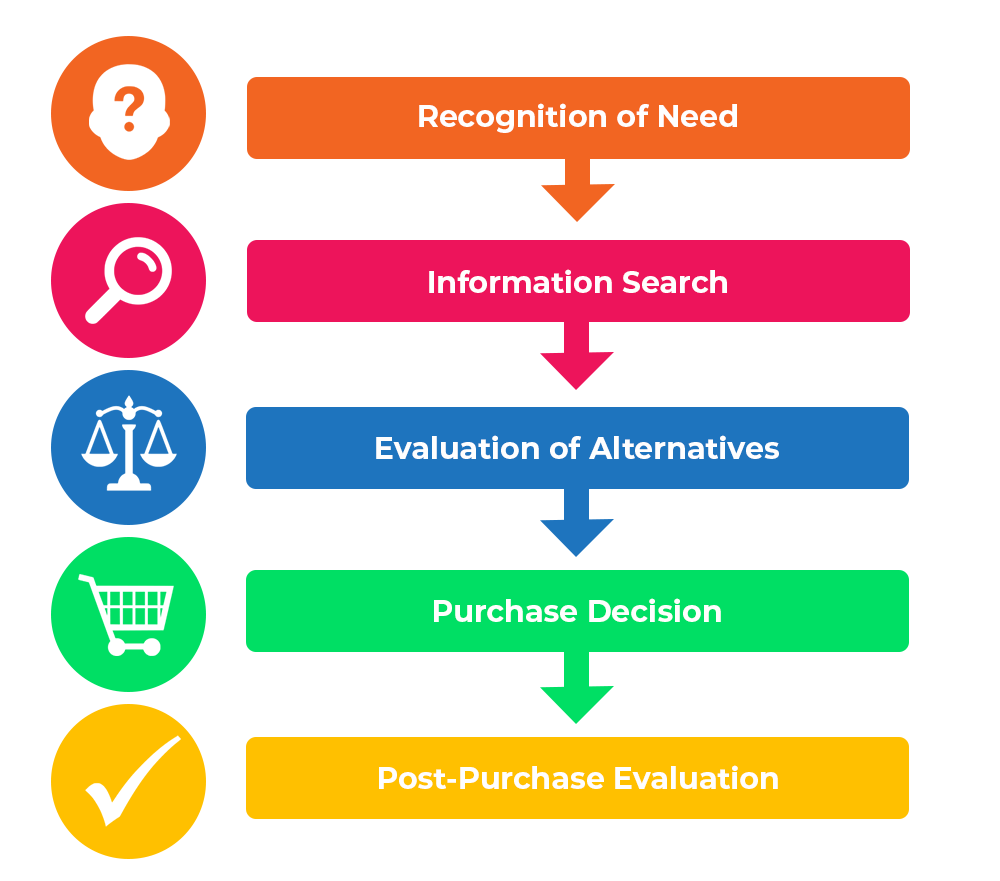

Visit our Marketing Theories Page to see more of our marketing buzzword busting blogs.
The Consumer or Buyer Decision Making Process is the method used by marketers to identify and track the decision making process of a customer journey from start to finish. It is broken down into 5 individual stages which we have decided to demonstrate with our latest decision making journey surrounding some rather sorry looking trainers.
The first stage of the process is working out what exactly you or the customer needs. The customer feels like something is missing and needs to address it to get back to feeling normal. If you can determine when your target demographic develops these needs or wants, it would be an ideal time to advertise to them.
In our case we noticed our running trainers were looking a little worse for wear and we acknowledged the need for a new pair.
This is the search stage of the process. One that is continually changing from old fashioned shopping around to the new shop front which is Google (other search engines are available - apparently). Information is not only gathered about stuff and on things but from people via recommendations and through previous experiences we may have had with various products.
In this stage a customer is beginning to think about risk management. A customer might make a pro’s vs. con’s list to help make their decision. People often don’t want to regret making a decision so extra time being put into managing risk may be worth it.
In our case we googled trainer reviews, and searches such as “what is the best trainer for dirt running?” among other searches as well as remembering that we didn’t like Gola or Dunlop shoes and had a nasty experience with a pair of Filas in the 90’s.
.png)
This is the time when questions start being asked. Is this really the right product for me do? Do I need a different product? If the answers are either “No it’s not right” or “yes I need a different product” then stage 2 may recommence. The stage 3 to 2 transition may happen several times before stage 4 has been reached.
Once the customer has determined what will satisfy their want or need they will begin to seek out the best deal. This may be based on price, quality, or other factors that are important to them. Customers read many reviews and compare prices, ultimately choosing the one that satisfies most of their parameters.
In line with our example we started questioning if we actually needed running shoes: are there alternatives out there? Were our original trainers that bad? The answers were Yes/Yes but none I liked/Yes they really were. So the process was able to continue.
The customer has now decided based on the knowledge gathered what to purchase and where to purchase what they desire.
At this stage a customer has either assessed all the facts and come to a logical conclusion, made a decision based on emotional connections/experiences or succumbed to advertising/marketing campaigns, or most likely a combination of all of these has occurred.
In our customer journey we purchased some rather nice Asics runners as we had a wonderful experience with them previously, they were well priced on the market and the marketing around Asics trainers has always linked them to being the best option for “real athletic trainers”. The positioning of the product also lent itself to where they were purchased, a sport shop rather than a shoe shop.
The review stage is a key stage for the company and for the customer likewise. Did the product deliver on the promises of the marketing/advertising campaigns? Did the product match or exceed expectations?
If a customer finds that the product has matched or exceeded the promises made and their own expectations they will potentially become a brand ambassador influencing other potential customers in their stage 2 of their next customer journey, boosting the chances of your product being purchased again. The same can be said for negative feedback which, if inserted at stage 2, can halt a potential customer’s journey towards your product.
To finish our customer journey – we very much like the trainers we have chosen – we would recommend them to a friend, and on purchasing our next set of trainers would probably make a similar brand or product choice. Our satisfaction has made us a brand ambassador for the company who created our wonderful trainers (unless they want to send us a free pair after this article….Size 9 thank you).
So there is the Consumer Decision Making Process in stages with the story of our last trainer purchase thrown in to boot (no pun intended).

For more articles on Marketing Theories you can visit our blog for articles on PESTEL, SWOT Analysis, The Marketing Mix or The Boston Consulting Group Matrix.
Check out this YouTube video below which is a recording of our Marketing Theories explained series. These are presented by Professional Academy marketing tutor and consultant, Peter Sumpton.
Alternatively you can find more information on Marketing Courses with Professional Academy by downloading our prospectus today or visiting the course information page.
If you would like help referencing this blog, check out our Harvard Referencing Blog.